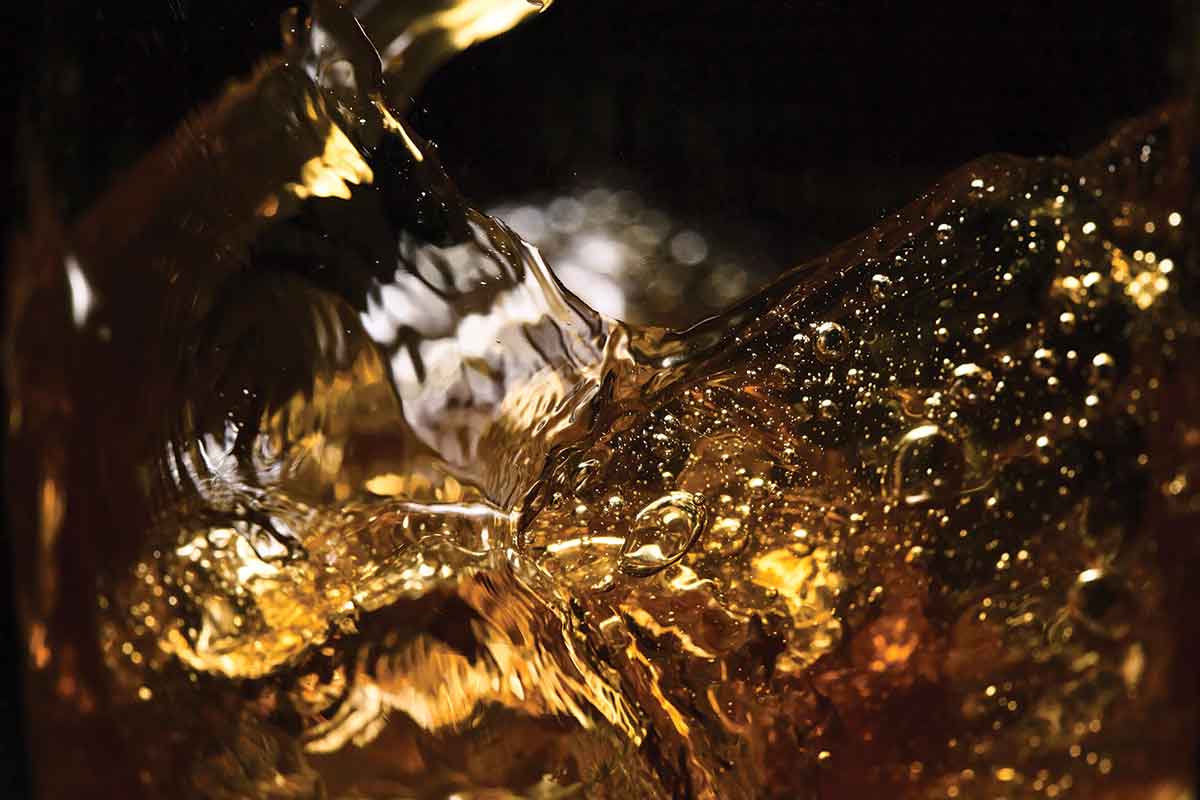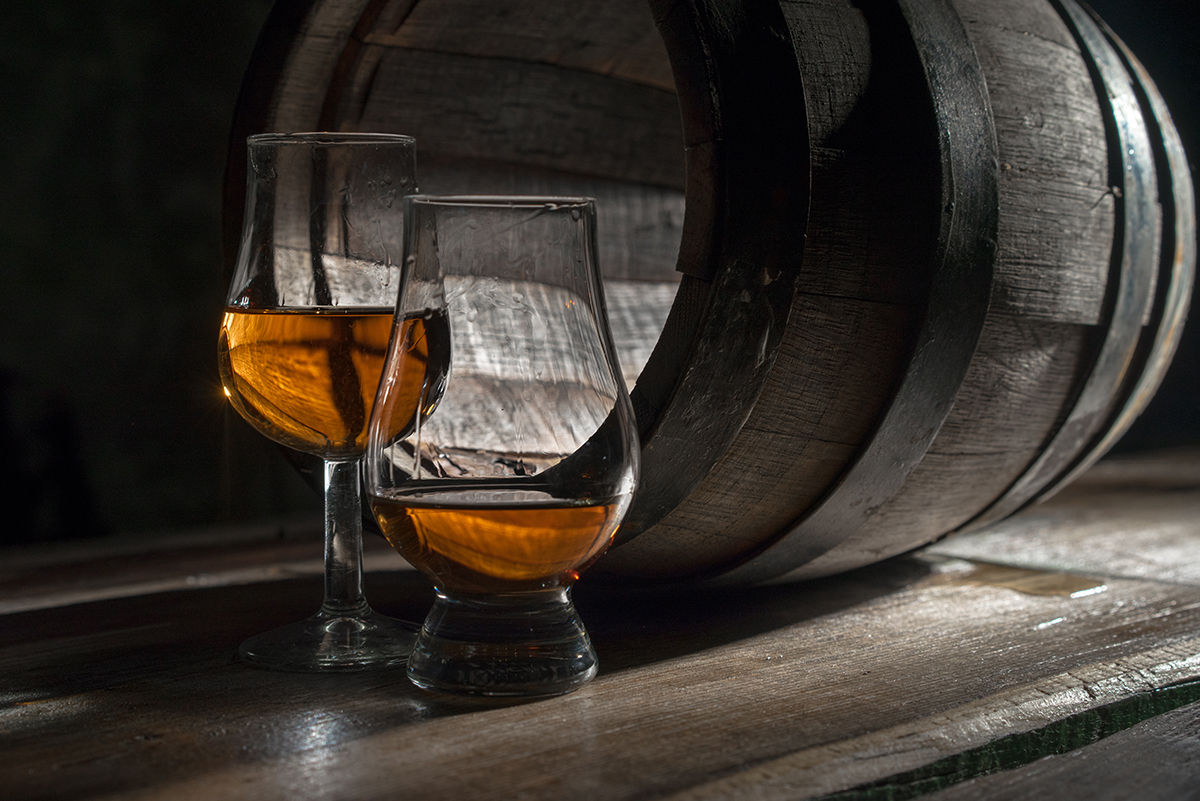If you ever find yourself sitting down at a table to judge craft spirits, you might discover an experience akin to washing your mouth out with soap. No, it’s not due to the expletives you’re unleashing as you power through one under-aged rye whiskey after another. It’s due to a fatal flaw that many upstart distilleries unknowingly perform—incorrectly proofing whiskey.
When a spirit’s alcohol-by-volume (ABV) is reduced too quickly and haphazardly, it can result in saponification. This is the hydrolysis of esters into soaps, or chemically speaking, fatty acid salts. Your booze tastes soapy, and there’s no way to fix it besides starting from scratch. Now is the time to unleash those expletives.
Why Correctly Proofing Whiskey Matters
You’ve distilled a product to perfection and you’ve matured it just right. Now it’s time to put it in the bottle at 40% ABV or whatever you’ve decided upon. Just dump a boatload of water into right? Not so fast. The art and the science of proofing whiskey correctly is little understood. But it’s often the missing link between a bad or even tainted product, and one which would otherwise be enjoyable.
“After a bourbon has already spent 5, 6, 7, 8 or more years maturing in the barrel, the last thing we want is for all those wonderful flavors and aromas to be destroyed by adding lots of water in a few brief moments,” says Nancy Fraley, blending and distillation consultant extraordinaire for dozens of distilleries.
She’s speaking here specifically in her role as the master blender for Wyoming Whiskey. Our conversation on this topic was spurred on by the taste of two samples from the distillery. The first was a whiskey at 118 proof, bound for eventual release as an Outryder 7 year old. The second was the official product, now in its final 100 proof form. In tasting these samples, we discussed how and why the distillery went about this process.

Slow Reduction
Fraley, with her deep background in brandy production, practices and preaches what’s known as slow reduction. “When using the slow reduction process, water is added both slowly over time and slowly to the whiskey in the tank,” Fraley says. “Thus, rather than adding water in one day to go from barrel to bottling strength, it takes us at least one month to several months to do this process.”
First and foremost, this helps prevent the calamity of saponification. There are other benefits though as well. “By allowing the molecules of the alcohol, water, and fatty acids time to bond properly, it helps preserve the fruity bouquet on the nose and intensity of aromas on the palate,” Fraley says. “We believe this process helps add a soft, silky mouthfeel to the whiskey.”
As with all areas of distillation, there’s a foundation of science that must always be considered. But there’s also a certain skill or knack that an expert hand will develop over time. “There is a good amount of science and chemistry behind slow reduction for sure, but I suspect that there is also some art involved,” Fraley says. “The art comes in deciding how much time it will take to reduce the whiskey from barrel to bottling strength, and how large or small the increments of water should be during each proofing session. Generally, the entire process is even slower for the highest end products if they are not going to be released at cask strength.”
Selecting the Right Proof
The process is also essential for nailing down how to best showcase a particular spirit at a particular strength. Proofs are sometimes chosen out of tradition or legal mandates. For instance, 80 proof is the legal minimum and 100 proof is required for bottled-in-bond. But in other cases, specific proofs are picked in order to present to you a spirit at its absolute pinnacle. The right proof is at a picture perfect point when its aromas and flavors shine the brightest.
“For certain releases, we want to let the whiskey itself tell us where the final bottling proof should be,” Fraley says. That involves sampling the spirit at potentially dozens of different proofs until that eureka moment occurs.
“For a product like Outryder, it met all of the legal criteria to be a Bottled in Bond whiskey, and it just so happened that after our lab trials, it actually tasted best at 100 proof,” Fraley says. “We were fortunate in that case, because of course a Bottled in Bond whiskey has to be bottled at 100 proof.”

Why Cask Strength Isn’t Always Better
There’s a misconception that cask strength whiskey is always better than a proofed down alternative. Unfortunately, some distilleries steadfastly release subpar cask strength offerings. Still, consumers continue to demand them. Yes, a cask strength whiskey packs more punch by definition—more alcoholic quantity. But it should really only reach your glass in full proof form if it was a cask of particular quality.
“If we find an individual barrel that is exceptional just as it is, then it will go into the Cask Strength program,” Fraley says. “However, it is very rare that we find barrels of that caliber. Most of the time when we do find individual barrels that are great in regard to aroma and flavor, they might still be a little too hot or aggressive on the palate to be released at cask strength.”
To release a cask strength offering, the whiskey inside should be fully fine-tuned and ready to go. “Our philosophy is that for a barrel to be a cask strength release, it had better be absolutely perfect as it is,” Fraley says. “In the industry, these types of barrels are often referred to as honey barrels. For us, that means that even if the whiskey is as high as 120 proof, it is entirely approachable and yet exceedingly complex at that proof. There is nothing more to be done.”
Adding Water at Home
As a closing point, think about the way you treat your whiskey at home. Consider how that applies to what a distiller might want to put into the bottle. Do you add a few drops of water into your glass to open up the aroma of a whiskey? Do you add in ice to bring out the sweetness of a hot, high proof bourbon? When a producer is proofing whiskey down from a full strength offering, it’s doing the same thing. It’s bringing the latent best out of that cask strength whiskey. “The water addition really opens that whiskey up and makes it a lot more enjoyable,” Fraley says.
Discover more with Distiller
Don’t buy your next bottle without downloading the Distiller app. Search by name or browse by style to read reviews, see flavor profiles, add to your lists and more! Plus when you upgrade to Distiller Pro you can scan bottles on the go and search by flavor to curate spirits to your taste. As an exclusive article discount we’re giving you a free trial month when you use code ONEFREE at checkout.
Discover flavor profiles, read reviews, add your favorites to lists and more! Download here.
Want to learn more about proofing whiskey?
With Distiller, you’ll always know what’s in the bottle before you spend a cent. Rate, Review, and Discover spirits. Head on over to Distiller, or download the app for iOS and Android today!
Want to enjoy Distiller ad-free plus exclusive discounts, giveaways, features and other perks? Join Distiller Pro today to support the Distiller platform and keep ads off of your screen.


